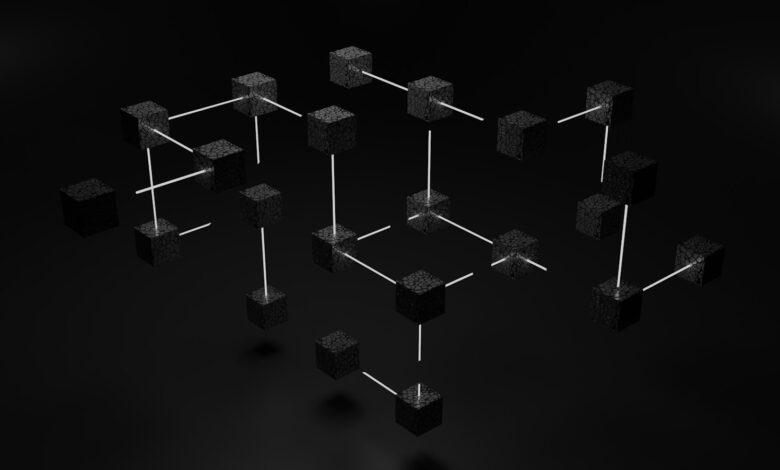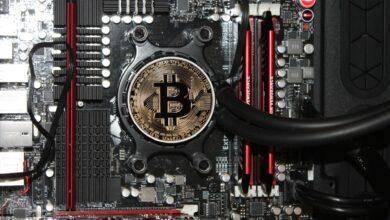Unlocking Crypto – Understanding Mining Rewards

In the intricate tapestry of cryptocurrency, the concepts of mining rewards and transaction fees serve as foundational threads that bind the entire ecosystem. These mechanisms not only incentivize miners to validate transactions but also establish a structure through which the blockchain operates efficiently. Comprehending the nuances of block rewards and the associated charges is essential for anyone eager to navigate this digital frontier. As we delve into the labyrinthine world of cryptocurrency earnings, it becomes imperative to grasp how these incentives shape market dynamics and influence individual mining strategies.
Mining is often romanticized as a gateway to financial prosperity, yet beneath the allure lies a complex interplay of factors that determine compensation: block bonuses and transaction costs. Each mined block represents not merely a collection of transactions but a reward system meticulously designed to ensure security and integrity within the blockchain. Analyzing these components reveals how miners are compensated not just for their computational efforts but also for their role as custodians of trust in an otherwise decentralized environment. The interplay of these elements serves as both incentive and challenge, driving innovation while maintaining stability.
As we embark on this exploration of mining incentives, it is crucial to understand the delicate balance between rewards and fees. The earnings derived from mining are not solely a reflection of computational power; they are intricately tied to the broader economic structures that govern cryptocurrency markets. By dissecting the layers of block incentives and transaction charges, we can appreciate how they influence miner behavior and, by extension, the health of the entire blockchain ecosystem. With each new block added to the chain, we are not merely witnessing a technical achievement; we are observing a vibrant, evolving narrative that underscores the profound relationship between technology and economics in our increasingly digital world.
Mining Rewards Explained: Understanding Block Rewards and Transaction Fees
In the intricate world of cryptocurrencies, mining rewards serve as a critical mechanism that incentivizes participants within the blockchain ecosystem. These rewards consist primarily of two components: block rewards and transaction fees. The former is a fixed amount of cryptocurrency that miners receive for successfully adding a new block to the blockchain, while the latter consists of fees paid by users who initiate transactions. Together, these elements form a compensation structure that not only motivates miners but also ensures the network’s security and efficiency.
As we delve into block rewards, it is essential to comprehend the underlying principles that govern their distribution. In most cryptocurrencies, such as Bitcoin, the block reward is halved approximately every four years in an event known as the “halving.” This systematic reduction in rewards serves to control inflation and gradually reduce the total supply of coins over time. By grasping these dynamics, one can better appreciate how mining incentives are structured to align with the long-term sustainability of the cryptocurrency.
Transaction fees, on the other hand, represent another layer of earnings for miners. When users engage in transactions, they often attach a fee to prioritize their requests within the blockchain. Miners have the discretion to select which transactions to include in a block based on these fees; thus, higher fees can result in expedited processing times. Analyzing this fee structure reveals a competitive landscape where users must balance cost against urgency, further enriching the incentive framework for miners.
The interplay between block rewards and transaction fees forms a nuanced compensation system that reflects market dynamics. For instance, during periods of high demand for blockchain space–often seen during price surges or significant events–transaction fees can spike dramatically. This volatility can result in substantial earnings for miners, highlighting how market forces directly influence the economics of mining. Consequently, comprehending this relationship is vital for anyone seeking to navigate the complexities of cryptocurrency investments.
Moreover, as blockchain technology evolves, so too do the structures surrounding mining incentives. Newer consensus mechanisms, such as Proof-of-Stake (PoS), offer alternative compensation models that do not rely on traditional mining. These models aim to reduce energy costs and increase scalability while still providing incentives for network participation. Analyzing these emerging trends allows investors and enthusiasts alike to anticipate shifts in the cryptocurrency landscape, ensuring they remain informed and adaptable.
In conclusion, mining rewards encapsulate a multifaceted system that intertwines block bonuses with transaction charges, creating a robust framework for incentivizing participation in blockchain networks. By understanding how these components interact, stakeholders can better navigate the complexities of cryptocurrency earnings while appreciating the underlying economic principles at play. As we continue to witness advancements in blockchain technology and its applications, staying attuned to these dynamics will be paramount for anyone invested in this digital frontier.
Understanding Block Rewards and Transaction Fees in Cryptocurrency
In the intricate world of cryptocurrency, block rewards serve as a primary source of compensation for miners, incentivizing them to maintain the integrity and functionality of blockchain networks. When a miner successfully adds a new block to the chain, they receive a predetermined quantity of cryptocurrency, known as the block reward. This reward is not merely a payment; it embodies the very essence of the mining process, reflecting both the computational effort exerted and the risk undertaken by miners in securing the network. The reward system thus operates as a vital mechanism, ensuring that participants are compensated for their contributions while concurrently fostering network stability.
In analyzing how block bonuses interact with transaction fees, we observe a fascinating dynamic at play within blockchain ecosystems. Each time a user initiates a transaction, they often include a fee to expedite its confirmation. These fees can vary significantly depending on network congestion and transaction complexity. Miners prioritize transactions with higher fees, as these additional charges represent an opportunity to enhance their overall earnings. Consequently, this interplay between block rewards and transaction fees creates an environment where miners are continuously motivated to optimize their strategies for selecting and processing transactions effectively.
Grasping the various elements that constitute cryptocurrency earnings necessitates an understanding of both block incentives and transaction costs. Block incentives primarily derive from the fixed rewards granted upon successfully mining a block, while transaction costs fluctuate based on market conditions. Notably, as more users engage with the blockchain, competition for space within blocks intensifies, leading to increased transaction fees. This evolving financial landscape emphasizes that miners must remain vigilant in their operations, adapting to changes in both block reward schedules–often defined by halving events–and shifting fee structures that arise from user demand.
Mining incentives further illuminate the complexities inherent in block rewards and fee structures. As cryptocurrencies mature and adoption rates rise, mining difficulty also escalates due to enhanced security measures embedded within blockchain protocols. This phenomenon necessitates that miners invest in more sophisticated hardware and software solutions to maintain profitability. Therefore, comprehending these incentives becomes crucial for prospective miners who aim to navigate this challenging terrain successfully. Understanding how changes in block rewards or transaction fees impact net earnings can significantly influence investment decisions and operational strategies.
Moreover, it is essential to recognize that various cryptocurrencies employ different models regarding block compensation and fee structures. For instance, Bitcoin’s halving events systematically reduce block rewards approximately every four years, thereby introducing scarcity into the ecosystem. Conversely, Ethereum has recently transitioned from a proof-of-work mechanism to proof-of-stake, fundamentally altering how miners earn compensation and participate in network validation. These divergent paths underscore the importance of analyzing specific cryptocurrencies individually rather than adopting a one-size-fits-all approach.
In conclusion, block rewards and transaction fees represent foundational elements of cryptocurrency mining that cannot be overlooked. By thoroughly understanding how these components interact within the broader blockchain framework, stakeholders can make informed decisions regarding participation in mining activities or investments in digital assets. As both technological advancements and market dynamics continue to evolve rapidly, ongoing analysis will be paramount in navigating this complex yet rewarding landscape of cryptocurrency economics.
Understanding Transaction Fees and Mining Incentives
In the intricate ecosystem of cryptocurrency, transaction fees serve as a vital mechanism for incentivizing miners to validate and secure transactions on the blockchain. These fees, often dictated by supply and demand dynamics, fluctuate based on network congestion and the urgency of the transaction. When users initiate a transaction, they can choose to attach a fee that prioritizes their transaction over others, ensuring its prompt inclusion in the next block. This self-regulating structure not only facilitates efficient processing but also allows miners to optimize their earnings through strategic fee assessments.
Mining rewards are another cornerstone of this ecosystem, comprising both block rewards and transaction fees. Block rewards, typically issued in the form of newly minted cryptocurrency, represent a miner’s compensation for successfully adding a new block to the blockchain. As the network matures, these rewards undergo halving events–specific intervals where the reward is cut in half–thereby increasing scarcity and potentially value over time. Understanding these structures is essential for grasping how miners are compensated and how this impacts overall network health and security.
Analyzing the interplay between transaction fees and block rewards reveals the underlying incentives that drive miners to maintain the integrity of the blockchain. When transaction volumes spike, miners may prioritize higher-fee transactions, which can lead to increased costs for users seeking swift confirmations. Conversely, during quieter periods, lower fees can suffice, demonstrating a responsive balance in the ecosystem. This dynamic interaction illustrates how economic principles govern not only individual transactions but also broader market behaviors within cryptocurrency networks.
Ultimately, comprehending these complexities is crucial for investors and participants within the cryptocurrency space. By grasping how fees and rewards function, stakeholders can better navigate their investments and understand potential fluctuations in earnings. As blockchain technology continues to evolve, so too will the structures surrounding transaction charges and mining incentives, shaping the future of digital finance in profound ways.
Factors Influencing Mining Rewards: Analyzing Block Bonuses and Transaction Costs
In the intricate world of blockchain technology, mining rewards are a fundamental aspect that drives the ecosystem. These rewards consist primarily of two components: block bonuses and transaction fees. The block bonus is a fixed amount awarded to miners for successfully adding a new block to the blockchain, while transaction fees represent the costs incurred by users when they prioritize their transactions for inclusion in a block. Understanding these elements is critical for anyone involved in cryptocurrency, as they directly affect the incentives for miners and, consequently, the overall health of the network.
The dynamics of mining rewards are heavily influenced by various factors such as network difficulty, total hash rate, and market conditions. Network difficulty adjusts approximately every two weeks based on the total computational power dedicated to mining. As more miners join the network, the difficulty increases, leading to longer confirmation times and potentially lower rewards for individual miners. This fluctuation creates an environment where miners must continuously assess their operational costs versus potential earnings, making strategic decisions that reflect both current and projected metrics.
Another pivotal factor in this equation is the transaction fee structure. Users can attach fees to their transactions to incentivize miners to include them in upcoming blocks. When the network experiences high demand, transaction fees tend to rise, thereby increasing mining revenues from transaction costs. Conversely, during periods of low activity, fees can plummet, squeezing miners’ profits and prompting them to reconsider their participation in the mining process. Grasping these fee dynamics is essential for understanding how miners adapt to changing conditions.
Moreover, compensation mechanisms play a crucial role in shaping miner behavior. The introduction of Bitcoin’s halving events–where the block bonus is cut in half approximately every four years–creates significant market volatility and influences miners’ long-term strategies. Such halving events not only reduce immediate earnings but also often lead to increased prices due to scarcity, thereby altering the landscape of both block bonuses and transaction fees. This cycle reinforces the idea that miners operate within a complex web of economic incentives that are continuously evolving.
Incentives extend beyond mere financial gain; they also encompass technological advancements and community engagement. For instance, some blockchain networks offer additional bonuses for miners who utilize energy-efficient methods or contribute to network security through innovative solutions. These incentives encourage sustainable practices and foster a sense of community among participants, ultimately enhancing the overall robustness of the blockchain ecosystem.
Finally, analyzing these factors holistically reveals that mining rewards are not static but rather dynamic entities influenced by a myriad of external and internal pressures. As we continue to observe developments in cryptocurrency markets and blockchain technologies, it becomes increasingly evident that understanding block rewards and transaction charges is essential not only for miners but also for users seeking efficient transaction processing and secure networks. This comprehension forms the cornerstone of informed decision-making within this rapidly evolving digital frontier.





